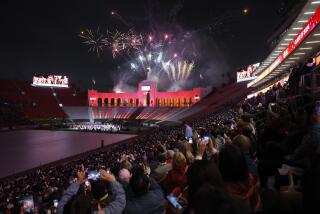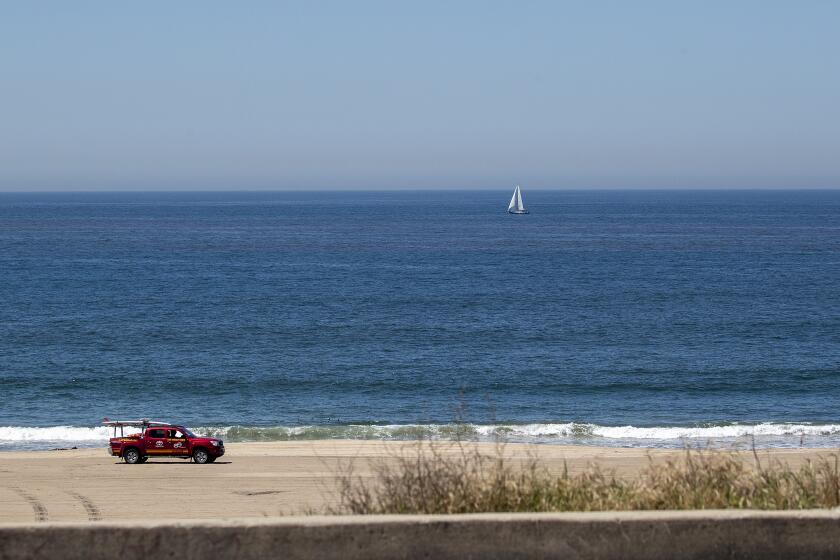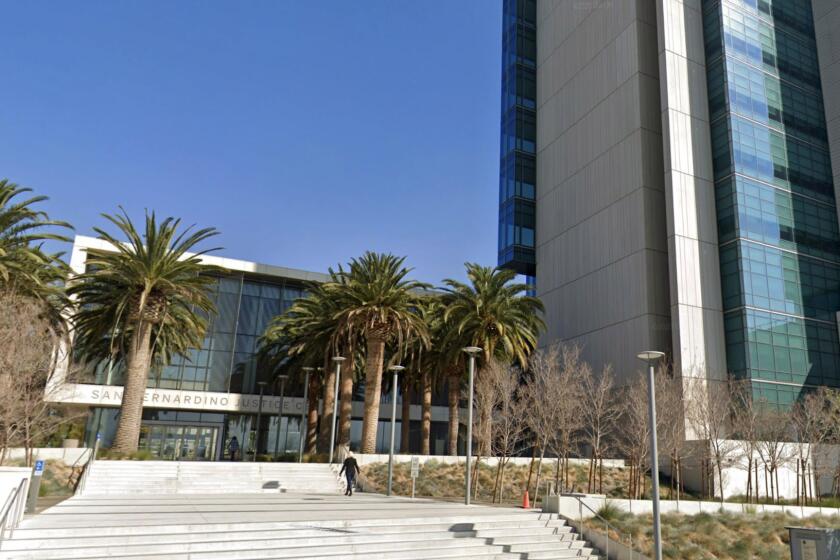Group Goes Extra Mile to Assist Marathoners : San Diego: Foundation has every medical-care angle covered.
They are prepared to treat up to 500 patients but would like nothing more than to see none.
Hundreds of hours have been spent gathering supplies, training volunteers and making sure every possible medical situation is provided for. Yet nothing would please Dr. Arthur Varley and his North County-based SPORT Foundation more than to kick back and enjoy the San Diego Marathon without so much as a cramp.
“In a perfect race, no one has to see us,” said Robert Buchanon, an orthopedic technician and race volunteer.
For the second consecutive year, Service Programs Offered to Recreational Teams (SPORT) will provide medical support to the marathon. On Sunday, as many as 8,000 runners will converge on Carlsbad to cover the 26.2 miles of the marathon, or the 13.1 of the half. Seventy-five SPORT Foundation volunteers are prepared to assist in areas ranging from bandaging blisters to lending emotional support.
Rick O’Connor, Carlsbad High’s trainer, sees 850 athletes in 16 different sports during a typical school year. But the marathon, for which he was a volunteer last year, is unlike any other sporting event in which he has been involved.
“We see so many people at one time,” he said. “Ten, 20, 30 people may cross the finish line and need care. Some have blisters, some are dehydrated, some are just wobbly. But you don’t want to scoff at them or send them on their way.”
Race director Lynn Flanagan said the health and safety of the runners in this event is her No. 1 concern.
“When you have 7,000 runners on the streets at one time,” Flanagan said, “you’re providing the opportunity for all sorts of things to go wrong. I want to know when a runner leaves the starting line that we do everything we can to get him or her to the finish line safely.”
Having been a runner herself, Flanagan is especially sympathetic to their needs.
“In my first marathon, I ran into problems with heat,” she said. “I was packed in ice and they let me go, but once I got to the top of the stairs (at Jack Murphy Stadium), I collapsed. They probably let me go before I was ready. I don’t want to see that happen.”
With SPORT Foundation’s involvement, she’s convinced it won’t. In her 10-year association with the marathon, Flanagan has worked with every major hospital in the area and she said she has never been this confident of the medical support team.
“They’ve rehearsed, they’ve practiced,” she said. “It’s one thing I don’t have to worry about. No one’s ever taken it as seriously as (Dr. Varley) has.”
Last year, under weather conditions described as ideal, Varley’s staff of 35 oversaw 3,700 runners and took care of 130 injuries, 80% of those within a two-hour span. This year, the staff of 75--approximately 50 professionals and 25 trained aides, all volunteers--expect twice that number.
Varley, a senior consultant for Southland Orthopedic Medical Associates and the director of SPORT Foundation, said they expect to treat 300 or 400 runners, but they could handle more.
“You prepare for the worst and hope to sit on your hands,” he said. “We’re set up to take care of what will be the maximum we think will get in trouble.”
That number could reach 800, if “horrendous weather conditions, a very hot, humid day,” prevailed. But Varley said conditions have to be pretty awful for that many to be affected.
“Our staff that can handle that, “ Varley said, “but 800 is the worse-case conditions. That’s like the developer talking about the 100-year storm.”
SPORT Foundation will handle the entire medical coordination--excluding massage services.
“We’re not trying to repair someone’s broken arm out there on the race course,” Varley said. “You’re trying to splint them and protect them and get them to the proper place for treatment. Even though the physicians there may be qualified to handle it, it’s not the place or the time to do it.”
The foundation is prepared to handle medical care if pushed into an emergency situation, but the real goal is to evaluate injuries and administer first aid, which Varley’s team will do primarily through its support teams, water stations and medical tents.
Two of the support teams are at the start-finish line and the midway point, the third roving between the others. They include one or two emergency physicians, an orthopedist, a chiropractor, one or two nurses, an orthopedic technician, one or two certified athletic trainers, three or four physical therapists and several student aides.
In addition to the tent at the start-finish, SPORT Foundation will have medical tents every six miles and water stands every mile with radio-equipped volunteers. Once in the tent, a nurse will sort the patients and decide whom they need to see.
“If they need something to drink, they’ll go to one area,” Varley said. “If they have a blister or a problem with heat, they’ll go to other areas.”
Varley cited blisters, abrasions, cramps and heat exhaustion, associated with dehydration, as the most common problems.
For the smaller nicks and cuts, the SPORT Foundation’s supplies include six cases each of three- and four-inch bandages, 5,000 bandages and 10 tubes of moleskin. For chafing, Varley said they have cases and cases of small Vaseline containers, available every six miles. For icing sore spots, there are several 300-gallon ice chests.
“The majority can go out and do a short event, a 5K or 10K, without doing serious injury to themselves,” he said. “That’s not true in a marathon. For most people, I don’t care what kind of shape you’re in, that’s a stress to your body. You’re going to push yourself to a limit and cross that limit before you cross the finish line.
“As you get to the end of a marathon, the 20-mile wall occurs much earlier for some people. Some people have told me they hit the wall at six miles and it was a long 20. It’s different for everyone, but one thing you can count on is everyone gets stressed in some capacity.”
To reduce the stress, the SPORT Foundation has introduced three concepts that have never been used in the San Diego Marathon: sag wagons, escorts and medical logs.
Sag wagons?
“For those runners who are sagging,” Varley said with a grin. “The vans drive through the race course and pick up runners who have been injured or are too tired, and bring them to the medical facilities.”
Volunteers have been trained to assist. If a runner resists, they won’t push the point.
“We don’t go out to stop runners,” Varley said. “If someone’s in a bad condition, they may want to rest, then go on. We’re there to help.”
Medical logs aren’t just for the benefit of race organizers. They can be helpful to family members or friends who have temporarily misplaced a loved one.
“Someone enters every individual name, bib number and problem into a log,” Varley said. “If Uncle Johnny doesn’t show at the finish line, we have a record that he was treated and went home, or more importantly, if he was transported by ambulance, we need to let the appropriate people know.”
Three days before race day, Varley offered some last-chance advice for entrants.
“You will not win a marathon in the last few days, but you sure as hell can lose it, or stop yourself from getting through it,” he said. “The biggest errors people make is to change shoes at the last minute or change their dietary patterns. The worst thing in the world you can do is to change something and have an unknown for 26 miles. Wear the shoes you’re comfortable in, eat what you usually eat and get a lot of rest.
More to Read
Start your day right
Sign up for Essential California for news, features and recommendations from the L.A. Times and beyond in your inbox six days a week.
You may occasionally receive promotional content from the Los Angeles Times.






